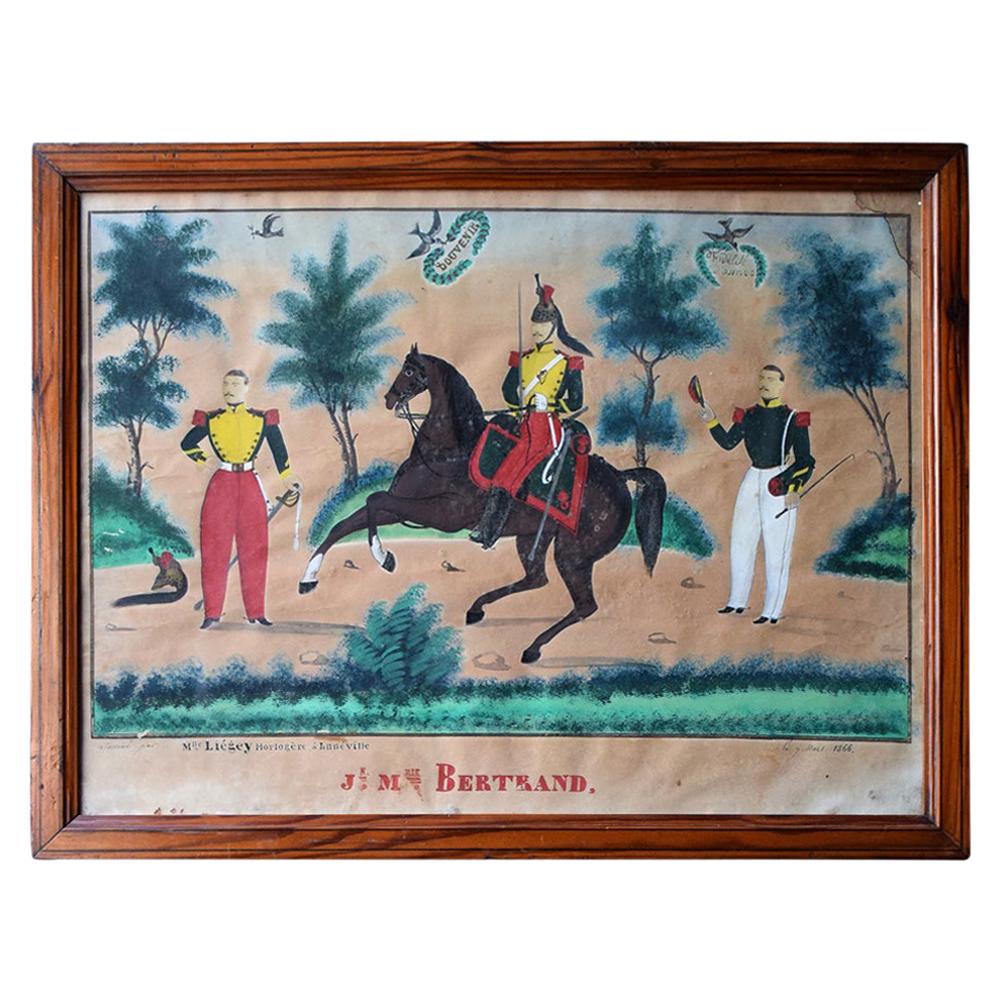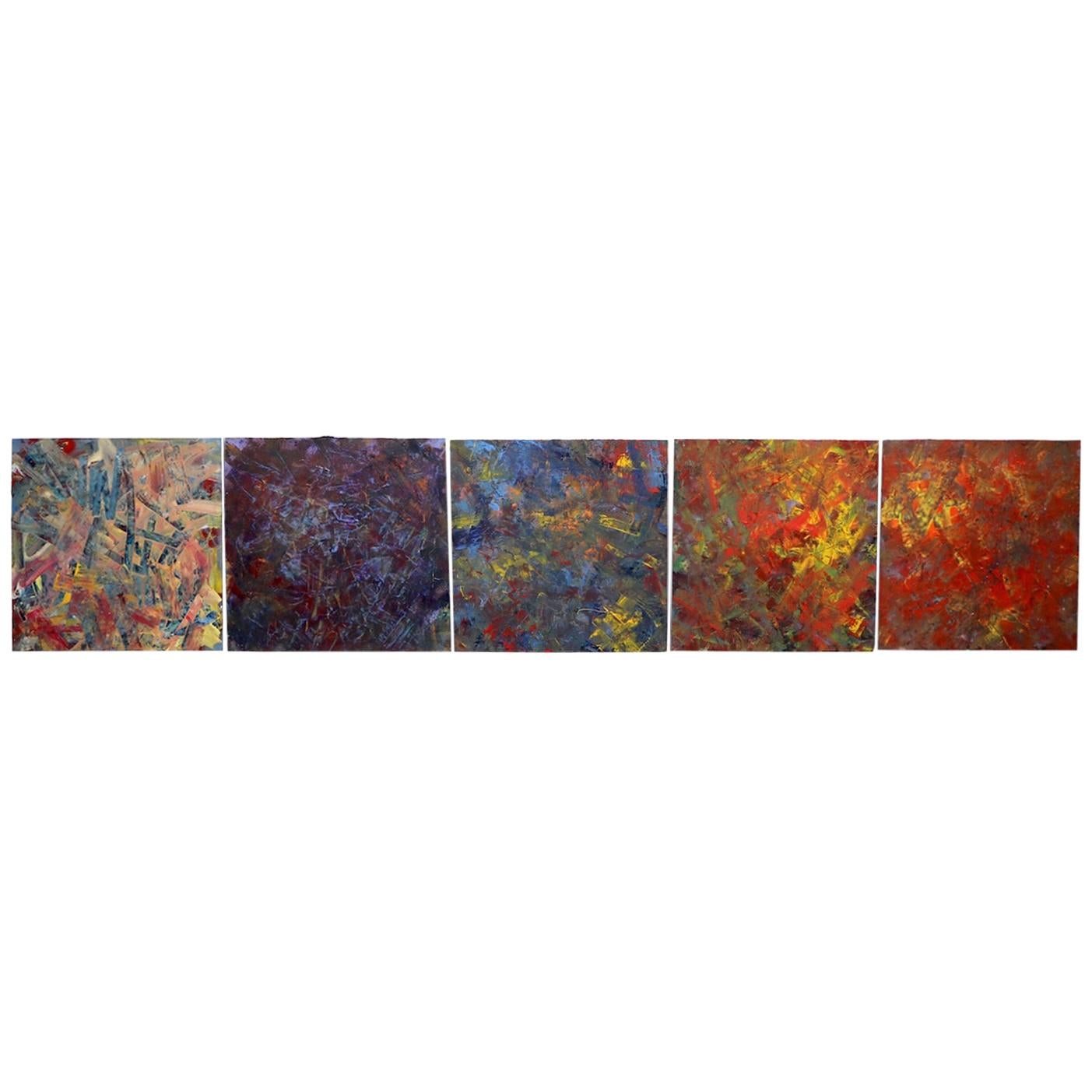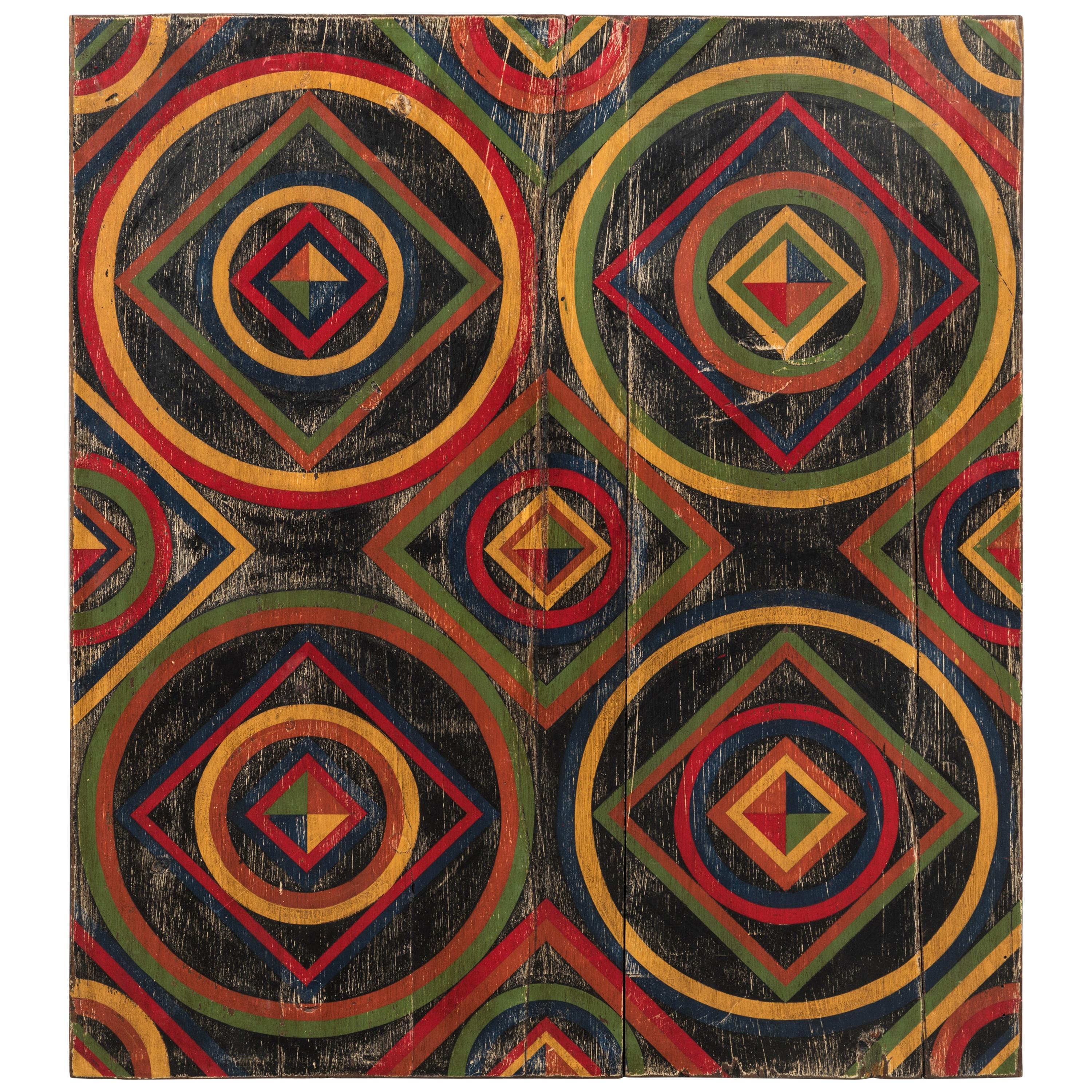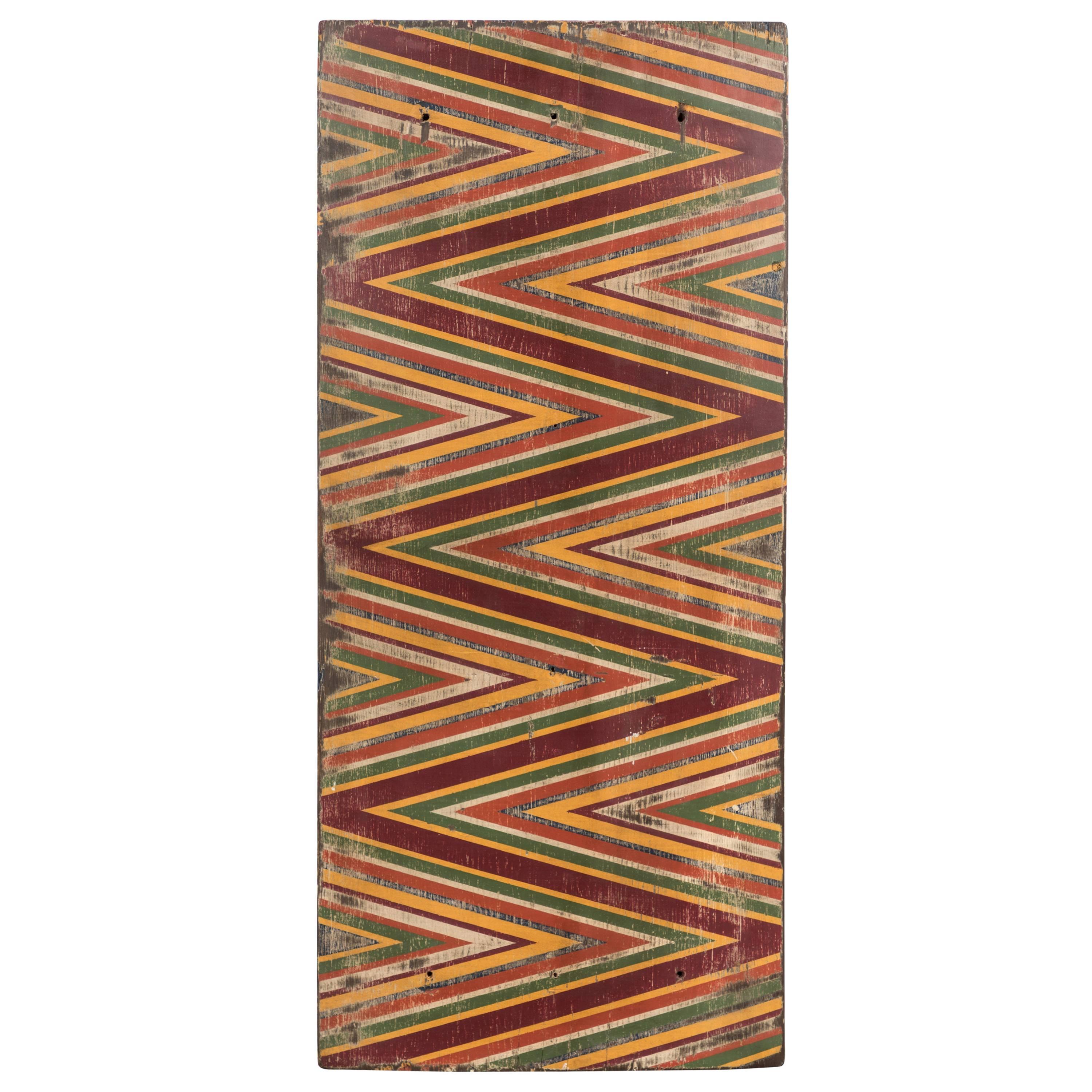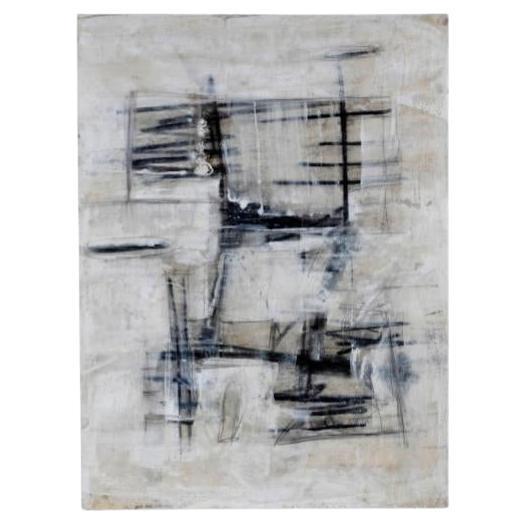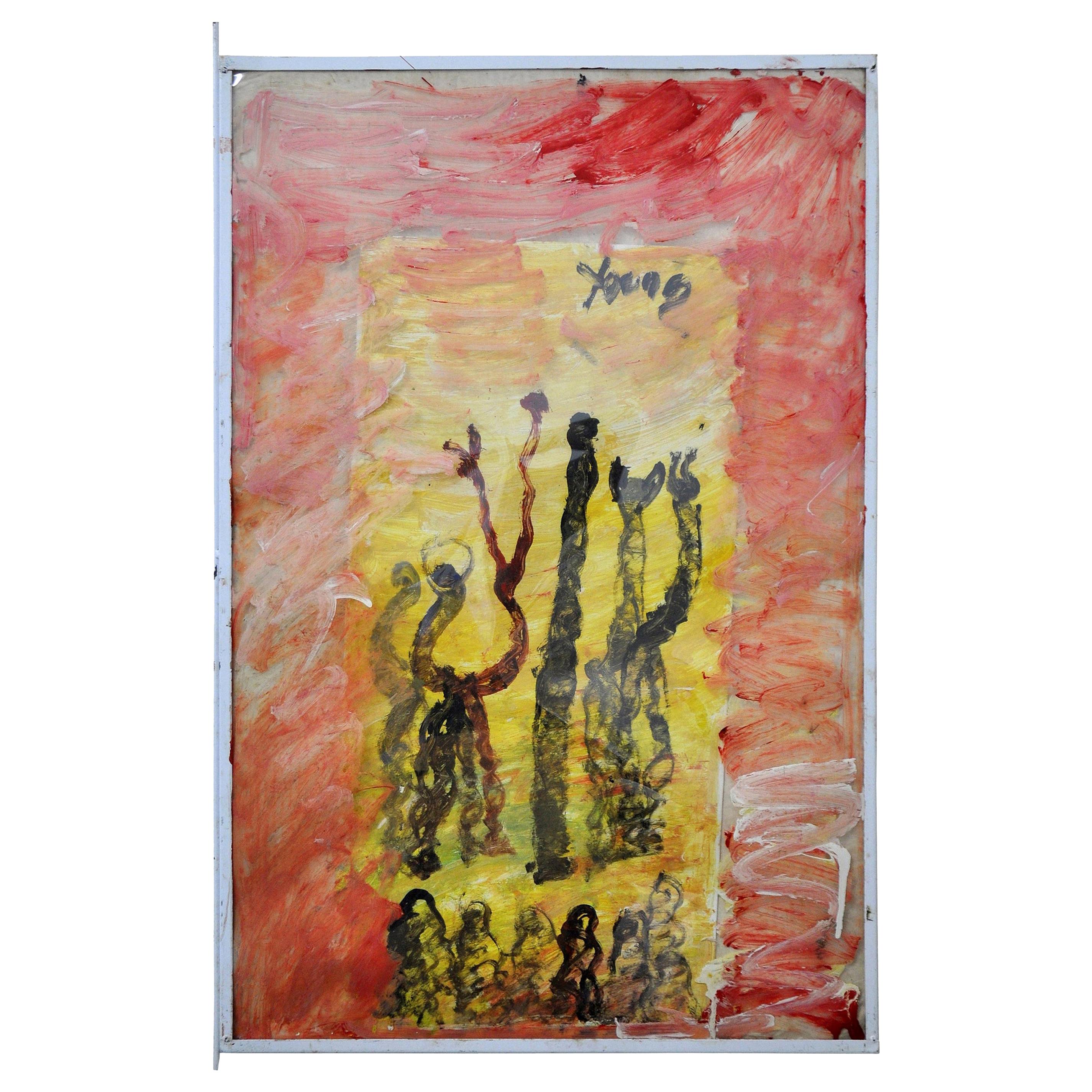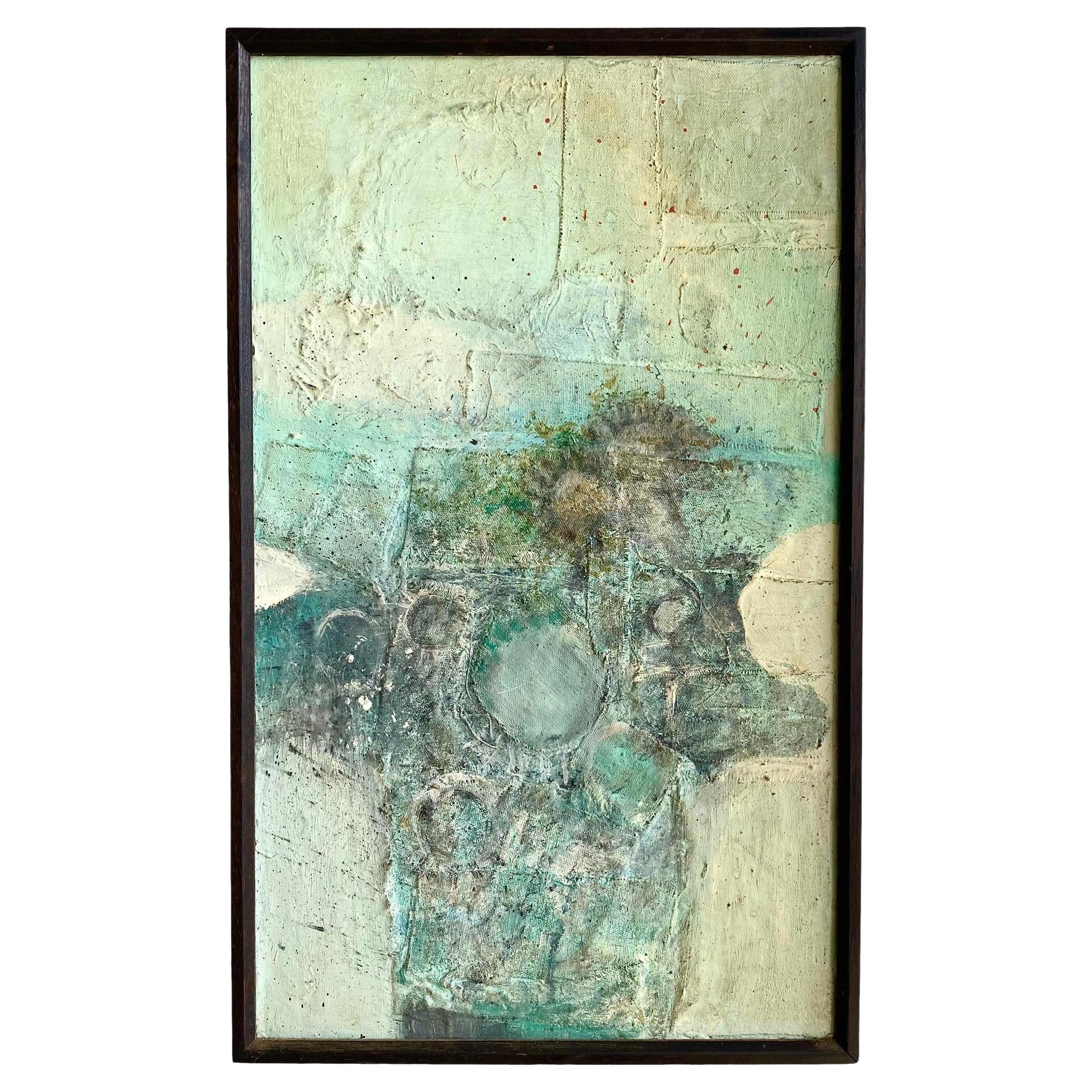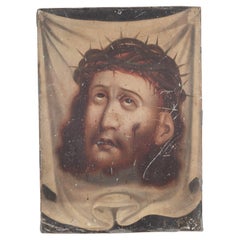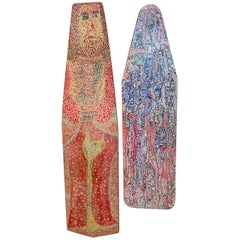
"I'm Loving It" Mixed Media Art by Brian Mcdonald
View Similar Items
Want more images or videos?
Request additional images or videos from the seller
1 of 8
"I'm Loving It" Mixed Media Art by Brian Mcdonald
About the Item
- Dimensions:Height: 30 in (76.2 cm)Width: 2 in (5.08 cm)Depth: 25 in (63.5 cm)
- Place of Origin:
- Period:
- Date of Manufacture:Circa 2014
- Condition:
- Seller Location:San Francisco, CA
- Reference Number:1stDibs: LU128022295522
About the Seller
5.0
Platinum Seller
These expertly vetted sellers are 1stDibs' most experienced sellers and are rated highest by our customers.
Established in 2014
1stDibs seller since 2015
1,145 sales on 1stDibs
Typical response time: 1 hour
More From This SellerView All
- 19th C. Mexican Retablo "Veronica's Veil", c.1880Located in San Francisco, CAAbout An original 19th century Mexican folk retablo "Veronica's Veil" or "El Divono Rostro" in Spain . Oil paint on tin. The Veil of Veronica, known in Italian as the Volto Santo or Holy Face, is a Roman Catholic Relic which, according to legend, bears the likeness of the Face of Jesus that was imprinted on it prior to Jesus' crucifixion. According to Roman Catholicism, Saint Veronica encountered Jesus in Jeruselum on the way to Calvary. When she paused to wipe the sweat (Latin, suda) off his face with her veil, his image was left on the veil. In the small village of Osa de la Vega in Spain, there lived a couple who led a very pious life. They were Gregorio de la Torre and Isabel Corral. From their father, Juan Montilla, they inherited a picture of the Face of Jesus or the Divino Rostro. A story that is told one day, to the amazement of many who confirmed its veracity, the picture began to perspire with living blood. News of this extraordinary event spread swiftly and widely throughout the land. CREATOR Unknown. DATE OF MANUFACTURE c.1880. MATERIALS AND TECHNIQUES Oil Paint on Tin. CONDITION Good. Wear consistent with age and use. DIMENSIONS H 14 in. W 10 in. HISTORY Retablos, better known as 'laminas' in Mexico, are small oil paintings on tin, wood and sometimes copper which were used in home altars to venerate the almost infinite number of Catholic saints. The literal translation for 'retablo' is 'behind the altar.' This unique genre of art, deeply rooted in European history, was brought to Mexico with the arrival of the Spanish and then ultimately adopted by New World mestizo natives to become what is known today as the Mexican folk retablo. The retablo was an art form that flourished in post conquest Mexico and then ultimately, with the introduction of inexpensive mediums such as tin, reached its pinnacle of popularity in the last quarter of the 19th century. With some exceptions, mostly untrained artists from the provinces worked to produce and reproduce these sacred images; some subjects painted more prolifically than others. A typical "retablero" may have reproduced the same image hundreds, if not thousands of times in his or her career. These oil paintings were sold to devout believers who displayed them in home altars to honor their patron saints. There are virtually hundreds of saints, each invoked to remedy a different situation. "San Ysidro Labrador," the patron saint of farmers, is venerated for good weather...Category
Antique 19th Century Mexican Folk Art Paintings
MaterialsTin
- 19th C. Mexican Retablo Saint Francis c.1880Located in San Francisco, CAAbout An original 19th century Mexican folk retablo of Saint Francis. Oil paint on tin. St. Francis of Assisi, Italian San Francesco d’Assisi was born 1181-1182 in Assisi, duchy of Spoleto, Italy and died October 3, 1226. He was canonized July 16, 1228. He founded the Franciscan orders of the Friars Minor and the lay Third Order. He was also a leader of the movement of evangelical poverty in the early 13th century. His evangelical zeal, consecration to poverty, charity, and personal charisma drew thousands of followers. Francis’s devotion to the human Jesus and his desire to follow Jesus’ example reflected and reinforced important developments in medieval spirituality. Cretor Unknown. Date of manufacture c.1880. Materials and techniques Oil Paint on Tin. Condition Good. Wear consistent with age and use. Dimensions H 14 in. W 10 in. History Retablos, better known as 'laminas' in Mexico, are small oil paintings on tin, wood and sometimes copper which were used in home altars to venerate the almost infinite number of Catholic saints. The literal translation for 'retablo' is 'behind the altar.' This unique genre of art, deeply rooted in European history, was brought to Mexico with the arrival of the Spanish and then ultimately adopted by New World mestizo natives to become what is known today as the Mexican folk retablo. The retablo was an art form that flourished in post conquest Mexico and then ultimately, with the introduction of inexpensive mediums such as tin, reached its pinnacle of popularity in the last quarter of the 19th century. With some exceptions, mostly untrained artists from the provinces worked to produce and reproduce these sacred images; some subjects painted more prolifically than others. A typical "retablero" may have reproduced the same image hundreds, if not thousands of times in his or her career. These oil paintings were sold to devout believers who displayed them in home altars to honor their patron saints. There are virtually hundreds of saints, each invoked to remedy a different situation. "San Ysidro Labrador," the patron saint of farmers, is venerated for good weather...Category
Antique 19th Century Mexican Folk Art Paintings
MaterialsTin
- 19th C. Mexican Retablo, C.1880Located in San Francisco, CAABOUT An original 19th century Mexican folk retablo. Oil paint on tin. Subject unknown. CREATOR Unknown. DATE OF MANUFACTURE c.1880. MATERIALS AND TECHNIQUES Oil Paint on Tin. CONDITION Good. Wear consistent with age and use. DIMENSIONS H 14 in. W 10 in. HISTORY Retablos, better known as 'laminas' in Mexico, are small oil paintings on tin, wood and sometimes copper which were used in home altars to venerate the almost infinite number of Catholic saints. The literal translation for 'retablo' is 'behind the altar.' This unique genre of art, deeply rooted in European history, was brought to Mexico with the arrival of the Spanish and then ultimately adopted by New World mestizo natives to become what is known today as the Mexican folk retablo. The retablo was an art form that flourished in post conquest Mexico and then ultimately, with the introduction of inexpensive mediums such as tin, reached its pinnacle of popularity in the last quarter of the 19th century. With some exceptions, mostly untrained artists from the provinces worked to produce and reproduce these sacred images; some subjects painted more prolifically than others. A typical "retablero" may have reproduced the same image hundreds, if not thousands of times in his or her career. These oil paintings were sold to devout believers who displayed them in home altars to honor their patron saints. There are virtually hundreds of saints, each invoked to remedy a different situation. "San Ysidro Labrador," the patron saint of farmers, is venerated for good weather...Category
Antique 19th Century Mexican Folk Art Paintings
MaterialsTin
$1,395 Sale Price36% Off - 19th c. Mexican Retablo "Veronica's Veil" c.1880Located in San Francisco, CAABOUT An original 19th century Mexican folk retablo "Veronica's Veil" or "El Divono Rostro" in Spain . Oil paint on tin. The Veil of Veronica, known in Italian as the Volto Santo or Holy Face, is a Roman Catholic Relic which, according to legend, bears the likeness of the Face of Jesus that was imprinted on it prior to Jesus' crucifixion. According to Roman Catholicism, Saint Veronica encountered Jesus in Jeruselum on the way to Calvary. When she paused to wipe the sweat (Latin, suda) off his face with her veil, his image was left on the veil. In the small village of Osa de la Vega in Spain, there lived a couple who led a very pious life. They were Gregorio de la Torre and Isabel Corral. From their father, Juan Montilla, they inherited a picture of the Face of Jesus or the Divino Rostro. A story that is told one day, to the amazement of many who confirmed its veracity, the picture began to perspire with living blood. News of this extraordinary event spread swiftly and widely throughout the land. CREATOR Unknown. DATE OF MANUFACTURE c.1880. MATERIALS AND TECHNIQUES Oil Paint on Tin. CONDITION Good. Wear consistent with age and use. DIMENSIONS H 14 in. W 10 in. HISTORY Retablos, better known as 'laminas' in Mexico, are small oil paintings on tin, wood and sometimes copper which were used in home altars to venerate the almost infinite number of Catholic saints. The literal translation for 'retablo' is 'behind the altar.' This unique genre of art, deeply rooted in European history, was brought to Mexico with the arrival of the Spanish and then ultimately adopted by New World mestizo natives to become what is known today as the Mexican folk retablo. The retablo was an art form that flourished in post conquest Mexico and then ultimately, with the introduction of inexpensive mediums such as tin, reached its pinnacle of popularity in the last quarter of the 19th century. With some exceptions, mostly untrained artists from the provinces worked to produce and reproduce these sacred images; some subjects painted more prolifically than others. A typical "retablero" may have reproduced the same image hundreds, if not thousands of times in his or her career. These oil paintings were sold to devout believers who displayed them in home altars to honor their patron saints. There are virtually hundreds of saints, each invoked to remedy a different situation. "San Ysidro Labrador," the patron saint of farmers, is venerated for good weather...Category
Antique 19th Century Mexican Folk Art Paintings
MaterialsTin
- Art Deco Ram's Head Bookends by Cornell Foundry, circa 1930-FREE SHIPPINGBy CornellLocated in San Francisco, CAABOUT Art Deco bookends of stylized ram's heads manufactured by the Cornell Foundry in New York in the 1930s. Marked with a copyright symbol "C" for Cornell. CREATOR Cornell Fo...Category
Early 20th Century Art Deco Bookends
MaterialsCopper
- Art Deco Postal Telegraph Clock c.1930 (FREE SHIPPING)Located in San Francisco, CAABOUT An Art Deco "Postal Telegraph Bichronous Electric Time" clock with a painted metal body, glass front with chrome rim, black lettering with a black second hand. The clock opera...Category
Early 20th Century Art Deco Wall Clocks
MaterialsGlass, Bakelite
You May Also Like
- Pair of Outsider Art Painted Ironing Boards by Michael HeinrichLocated in Palm Springs, CATwo painted ironing boards by the noted Woodstock NY artist Michael Heinrich. One of the boards is monogrammed MH. These are acrylic on much older wood ironing boards. These are wond...Category
Late 20th Century American Outsider and Self Taught Art
MaterialsPaint, Wood
- German Military Folk Art Gouache Painting, circa 1866Located in London, GBMilitary painting, circa 1866 We are proud to offer a wonderful example of a mid-19th century German gouache folk art military painting. This exampl...Category
Antique 19th Century German Outsider and Self Taught Art
MaterialsPaint
- Outsider Art Santa Claus, Acrylic On Paper.Located in Chicago, ILJust in time for the season, an outsider art child like Santa Claus painting done in acrylic on brown paper. Framed in a red lacquered wood and g...Category
Late 20th Century Canadian Paintings
MaterialsPaper, Acrylic
- Aboriginal Painting on Hollow LogBy Hamish KarrkarrhbaLocated in Atlanta, GAArtist: Hamish Karrkarrhba. Year of birth: 1968. Nationality: Australian. Region: West Central Arnhem Land. Language group: Kuninjku. Medium: Wood and ochre paint. Measurement:...Category
21st Century and Contemporary Australian Tribal Outsider and Self Taught...
MaterialsWood
- Vintage Abstract Expressionist Oil Paintings on MasoniteBy (after) Jackson PollockLocated in New York, NYSeries of 5 abstract expressionist painting each on a Masonite board. These paintings were purchased from an estate in Westchester NY, they date from the 1960s or 1970s they are well...Category
Mid-20th Century American Expressionist Paintings
MaterialsMasonite
- Anonymous Abstract Geometric Painted BoardLocated in Santa Monica, CABold geometric abstract board found in Texas. We have a collection of these boards from an anonymous artist. Painted on recycled cupboard doors, table tops, stool tops and bread boar...Category
Vintage 1950s American Folk Art Paintings
MaterialsWood

